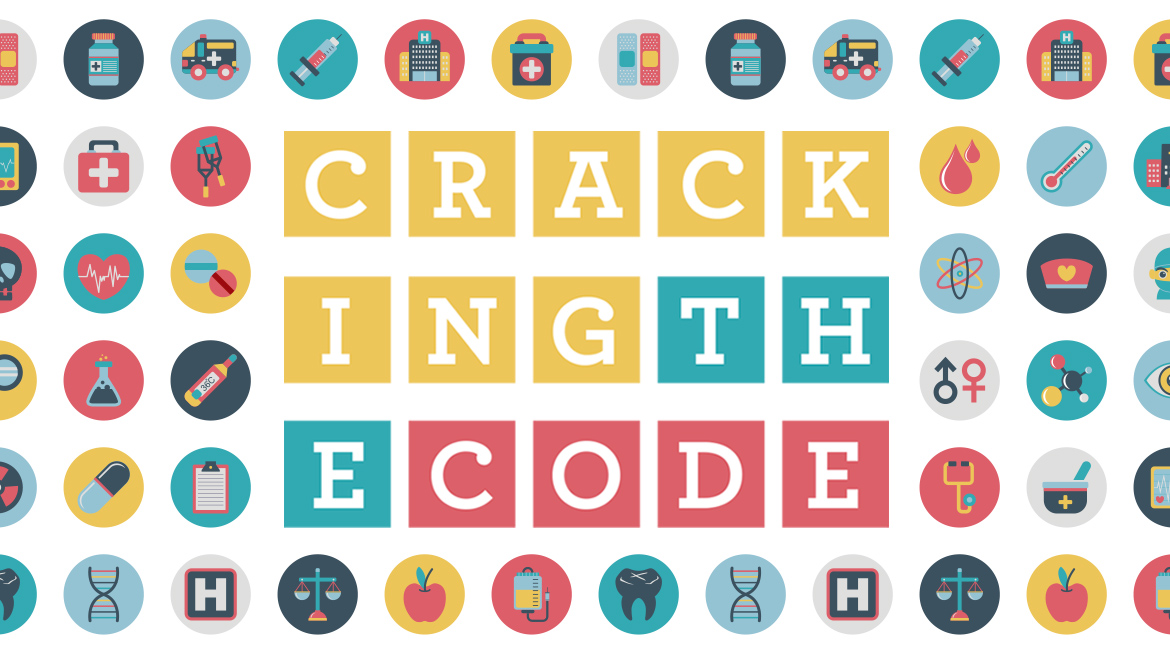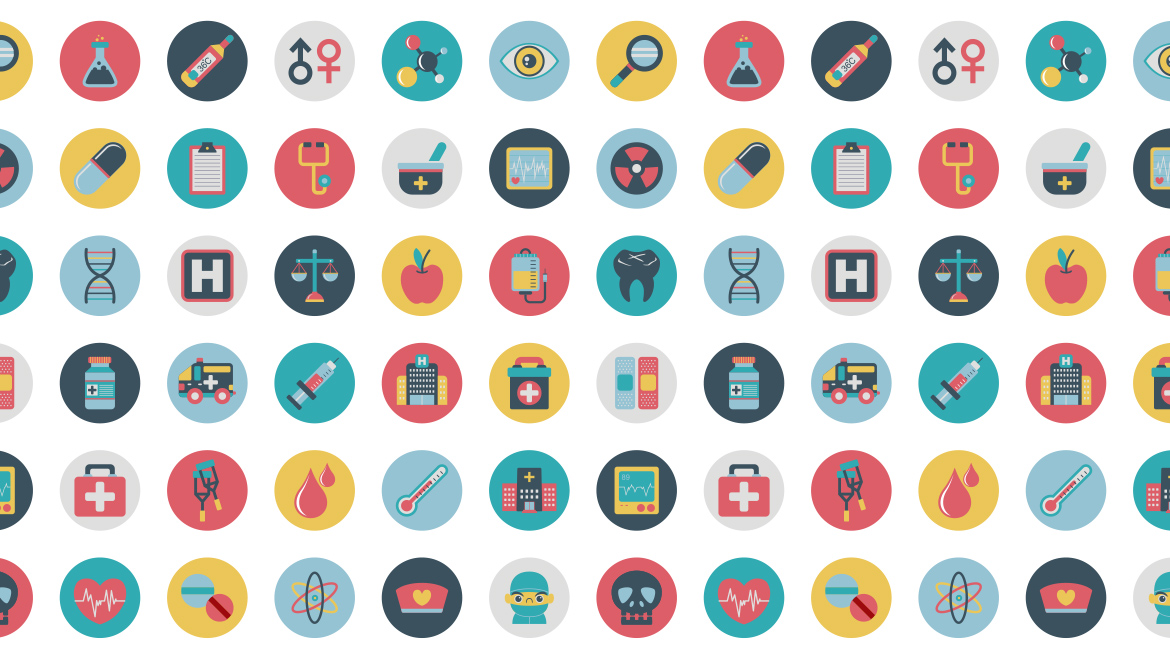Cracking the Code


Months after a nationwide transition in medical coding, how have University of Missouri health care providers adapted?
The week when hospitals and health care providers across the United States stared down a potentially cataclysmic event, likened by many to Y2K, Dr. Aaron Gray was celebrating his 10th wedding anniversary with his wife in the Pacific Northwest.
It was their first visit to the region. They hiked to waterfalls, explored the coast and dined at some of Portland’s best restaurants. It proved to be the perfect place for Gray to take refuge from the nationwide transition to a new medical coding system.
“I joked with people that our vacation came at a good time,” says Gray, a physician who splits his time between family medicine with University Physicians and sports medicine at the Missouri Orthopaedic Institute. “As a provider, there was a lot of fear because of the unknown of what this change was going to mean.”
Change has come in steady doses for Gray and many others in the Columbia medical community in recent years.
Some of that change involves the construction of immense multi-million dollar structures with fancy exterior glass and bright interior corridors. The $40 million addition developing at the corner of Monk Drive and Stadium Blvd. is one Gray looks down on from his office on the fourth floor of the Missouri Orthopaedic Institute.
Other change isn’t as glamorous, but it has to be done — like when the Department of Health and Human Services mandated that all health care providers across the country convert to a new coding system on Oct. 1, 2015. The new system, from the 10th revision of the International Classification of Diseases, also known as ICD-10, replaced ICD-9, which had been used in the U.S. since 1979.
Although ICD-10 moves U.S. health care into the future, it seemed like an abrupt and intimidating transition from the shallow to the deep end of the pool. The number of diagnostic codes jumped from 14,000, in ICD-9 to 69,000 in ICD-10, while the number of procedural codes exploded from 4,000 to more than 70,000.
Gray was especially concerned about the extra demands ICD-10 could place on physicians. But when Gray returned from his vacation, he quickly realized the months, even years, of conjecture and uncertainty might have been a bit overstated.
“In reality, it wasn’t that bad,” Gray says. “Things didn’t break, and it has been less of a burden than I feared.”
Getting Their Act Together
A lot of what a skilled physician does, Gray says, is similar to a journalist’s inquiry — digging for information, trying to get to the bottom of a patient’s condition.
But instead of telling stories in sentences and paragraphs, health care providers work in a universal alphanumeric coding system. These medical codes are used to identify and record health conditions as well as create claims to be paid by insurers. Appropriate codes are extracted from a physician’s notes or a patient’s lab work.
ICD-10 requires more detail than ever to describe health conditions. This means physicians have to ensure they’re reporting the circumstances and particularities of an injury or illness.
“As a provider, there was a lot of fear because of the unknown of what this change was going to mean.” – Dr. Aaron Gray
“I just have to be more intentional and thorough in my documentation,” says Gray, who completed his residency at the MU in 2010. “The information was probably in my notes before, now it’s just required. In the day-to-day, it really hasn’t been that much extra work for me, and my interaction with patients hasn’t changed at all.”
For most physicians, ICD-10 is more of an acquaintance than an intimate friend. Unless Gray orders a test, he is not the one who decides what codes are attached to a patient’s visit. That’s the job of Stephanie Smith, a reimbursement consultant at the Missouri Orthopaedic Institute, and her team of 10 coders and billers. They review Gray’s sports medicine and orthopedic notes and determine the most accurate codes to send to insurers for reimbursement.
“I can’t give Dr. Gray kudos enough,” Smith says. “He truly does have a detailed note and always has given a detailed note. That’s why it was probably easy for him to adjust. He could just stay status quo and keep on going.”
In the year leading up to the change, MU Health Care provided training and resources specific to orthopedic injuries and fractures for physicians and coders at the Missouri Orthopaedic Institute.
The learning curve was steep for the coders. Not only did they need to get comfortable with the expansive catalogue of ICD-10 codes, creating cheat sheets with frequently used codes, they needed extra time after Oct. 1 to make sure they were coding as accurately as possible.
But the biggest challenge for coders has been insufficient documentation from physicians. If something is missing or something limits their ability to pinpoint a code, then a coder has to contact the doctor and request more information or clarification. Since coders didn’t need a high level of detail in ICD-9, Smith says some physicians got lax and would write something as simple as “knee pain” in their notes.
That doesn’t fly anymore. Doctors have to specify which knee is injured. According to the Centers for Medicare and Medicaid Services, more than one-third of the increase in ICD-10 codes is due to addition of laterality (indicating left, right or both).
Orthopedics has experienced the largest increase of all the various sections of code sets. For an example, Smith highlights the number of codes for a distal radius fracture (or a broken wrist, in layman’s terms), which has gone from two to 20 codes.
Smith’s three clinical coders experienced a significant lag time in coding after Oct. 1, largely because of subsequent back-and-forths with physicians. Before the changeover, clinical coders submitted coding two to three days after a patient’s visit. For the two months following, they ran 10 to 12 days behind. By December, they were around five days.

“The codes are only as accurate as the skill and accuracy of the original doctor who saw the patient,” Gray says. “If the doctor does their job, then this is all pretty easy on the coders. It’s when the doctors don’t put enough detail in their notes that it takes a lot of time.”
In 2016, Smith’s team will focus on improved collaboration with working physicians and medical residents to get even better documentation. She expects to be back down to two to three days soon.
“I can feel like I’m nagging sometimes,” Smith says. “But recently a physician told me, ‘We’re just so thankful we have you guys to remind us we need to be doing those things. I don’t view it as being a nag or a bad guy. It’s what is required, and you’re just ensuring we get to that requirement.’”
Partying Like It’s 1999
The minimal drop in physician and staff productivity is a testament to the hard work and preparation put in throughout the MU Health Care system.
Dr. Thomas Selva, the chief medical information officer for MU Health Care, engineered much of the transition. His primary role was to be a liaison between IT and many of the physicians and health care providers, educating them on the details of the transition and ensuring they understood how to use the systems.
“We wanted to be at an optimal place when the cutover occurred, to avoid issues like bills being dropped and then having to deal with appeals down the road,” says Selva, who has been with MU Health Care for 27 years.
Many of the Y2K-esque alarms triggered by ICD-10 centered on technology, specifically whether the computer systems could adjust to new codes and a higher volume of traffic. Fresh memories of the tumultuous Healthcare.gov rollout in 2013 fueled some of those fears.
MU Health Care is no stranger to incorporating technology into its daily operations — it’s been recognized as one of the “most wired” health systems in the country, thanks to a partnership with Cerner through the Tiger Institute for Health Innovation. In 2014, MU Health Care became the ninth health system in the country to meet federal stage 2 “meaningful use” standards for electronic health records.
Cerner helped create and manage IT solutions so MU Health Care could navigate the uncertain build up to ICD-10.
“If you go back to 2012, we started getting early versions of ICD-10 codes so we could begin to test it and see the impact,” says Bryan Bliven, who oversees the IT infrastructure for MU Health Care. “We’re always trying to move forward. We don’t like to hold steady and then unveil a big change. We’re constantly making changes to make what we do better.”
The night ICD-10 went live, Bliven and his team set up a command center and worked through the night to keep an eye on things and troubleshoot any problems. Although Selva approached the night with a more confident demeanor than most, Bliven couldn’t disguise his anxiety.
“There were a lot of unknowns,” Bliven says. “What if you hit midnight and you make the changes to the systems and nothing works? But once we flipped all the switches, crossed our fingers and watched the first couple go through, we were like, ‘OK, it’s working.’”
Stephanie Smith shared Bliven’s concerns about a system crash and struggled to fall asleep the night of the change. She had no trouble at work the following morning.
“We don’t like to hold steady and then unveil a big change. We’re constantly making changes to make what we do better.” – Bryan Bliven
“You wouldn’t have even have known there was a transition, on the technical end of it,” Smith says. “It was smooth.”
MU Health Care set up a command center to support IT and coding following the transition. The plan was to make it available for a few weeks. It was disbanded within a week, for lack of use.
In all, MU Health Care has about 90 coders and billers, including the addition of one part-time and one full-time coder in 2015. A contracted coding service is available for rare instances of backlog, but less than five percent of coding has moved through this service since ICD-10 launched.
The post-implementation project phase for ICD-10 at MU Health Care extends into February. This allows more time to sort through data about claims being denied or rejected. It’s still too early to determine the impact of the changes.
At the end of October, the Centers for Medicare and Medicaid Services announced that about 10 percent of claims submitted nationwide were rejected during the first month with ICD-10. In fact, out of 4.6 million claims per day, two percent were rejected because of incomplete or invalid information, and .09 percent were rejected for invalid ICD-10 codes.
“So far, and not to jinx us, I’ve been surprised by how smooth it’s gone,” Selva says. “If a tidal wave hasn’t hit by February, with the volumes we do, it means we’re probably OK.”
Most of the benefits of ICD-10 will not be realized for some time. Since more detailed medical information is being put into digital systems, there’s a better chance to get data output to improve health care outcomes, track disease outbreaks, facilitate international communications (other countries already use ICD-10), and perform advanced research.
Gray is particularly excited about the research opportunities at MU Health Care because good patient data can be the foundation for better health care.
“It’ll be nice when we start seeing some of the research,” Gray says. “But it’s probably three to five years away.”
In the meantime, Selva and Bliven have started moving down their to-do lists. The all-consuming push to prepare for ICD-10 meant a lot of other important projects had to be put aside.
“We’re hoping there are no repercussions with ICD-10 in 2016,” Selva says, “because we have a lot of other things on our checklist that we need to get done to move forward and advance as an institution.”


